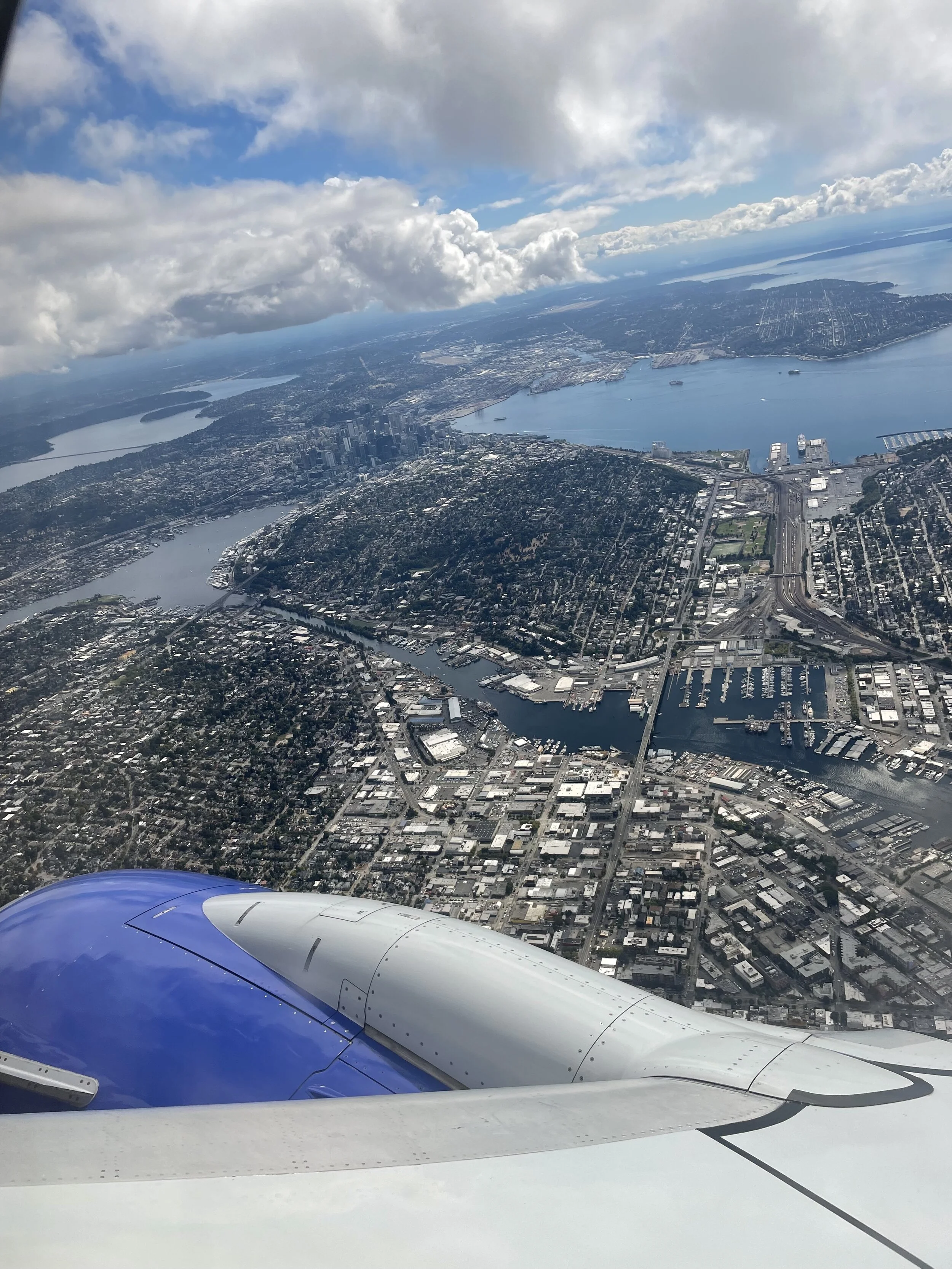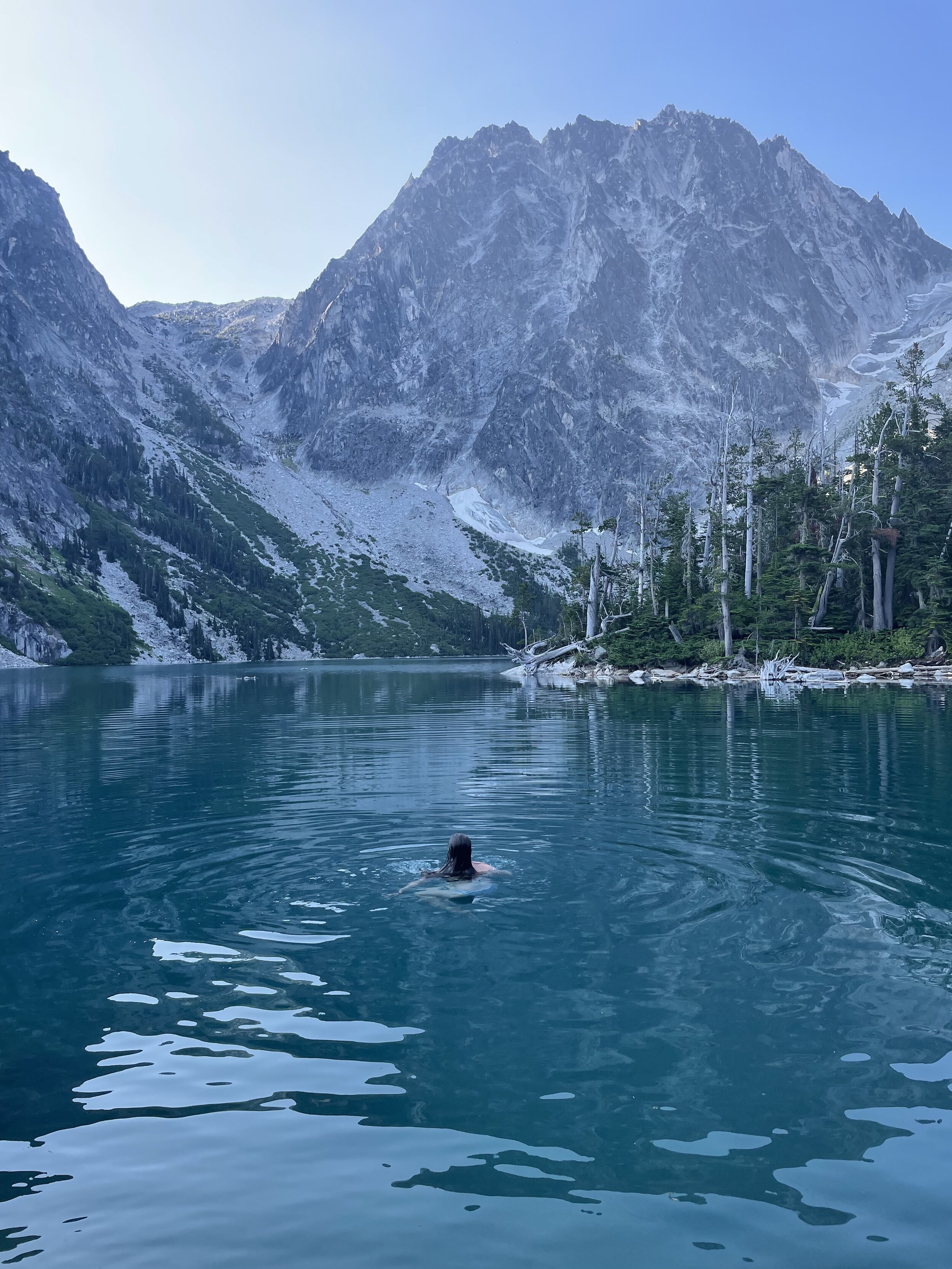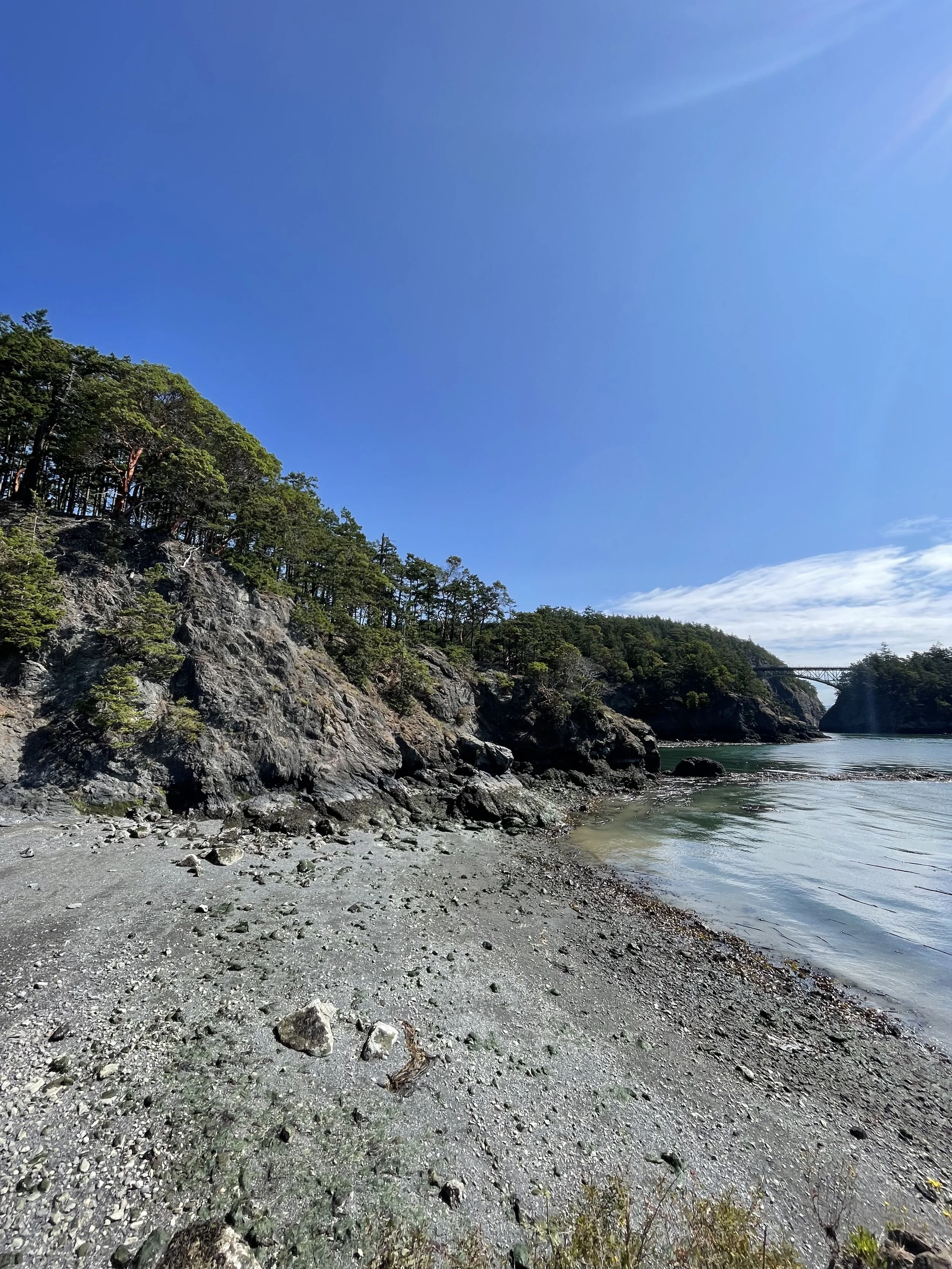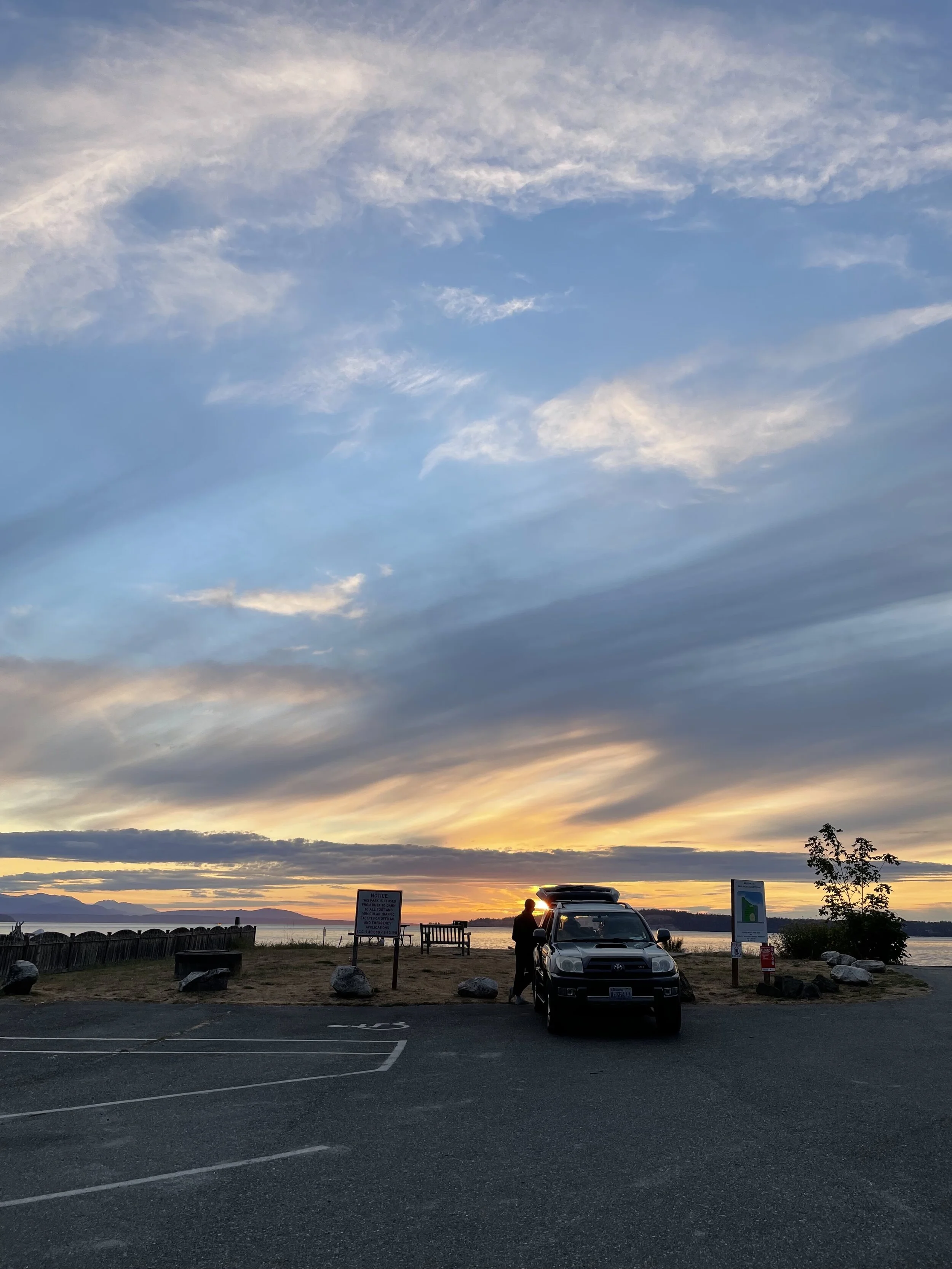The Space Needle and Life
Video shots of Seattle are always angled to center the Space Needle in the skyline. Upward panning camera angles make the spindly white armature feel like reaching arms, ready to envelop the helicopter carrying a camera capturing the sunset sky behind the busy city below. Due to videos like this, I perceived the Space Needle as the icon of Seattle. Therefore, it must be enormous. It is not, I discovered. If you aren't at Pike's Place Market on the water or high up in a building with unobscured views facing west, it is tiny, dwarfed by towering grey buildings all around.
Driving North on Interstate 5 into the city provides a panoramic view from the Olympics across the Puget Sound, the city, and the neighborhoods near Lake Washington. The Space Needle is at the Sound's edge, a quarter of the way across the vista. Buildings from the freeway angle do not sit immediately behind the Needle, allowing for a background of blue sky, water, and mountains to frame the white spire. But, in comparison to the rest of the city, the Needle is half the height of dark rectangular structures overlapping and fighting for space in the heavens. Like the earliest signs of spring, if you aren't looking for it, you miss Seattle's icon.
Life is constantly revealing itself to be less about grandeur and more about paying attention. The things that posture as the apogee of life–travels, promotions, engagements, births–exist as pinnacles only for a moment before being exiled to a more lasting home, our memories.
We stand at the edge of the Grand Canyon, snapping pictures to show our minuscule-ness compared to the great fissure of earth. We find a quiet place to sit and stare at the winding Colorado River and the variations in the rock. Suddenly we are color theorists, commenting on aqua tones in the water and the ochre and crimson ribbons dancing across canyon walls.
We then return home with a sense of awe, an awe that fades as we anxiously crawl in traffic back into our city and wash the dust from our feet in sterile tiled showers. We were rapt with attention, and then we left. How peculiar the attentive gaze of our eyes and hearts when we inhabit places deemed 'grand.'
The Space Needle is portrayed as a magnificent chunk of the Seattle skyline. Every time I pass it, I point and gasp, yet I eventually conclude, is it that wonderous? But I have been told the Space Needle is grand, so I pay extra attention to it. Meanwhile, I'm missing the sculpture installations at street level, a couple holding hands walking down the sidewalk, and melting snow on the mountains. The predetermined grandeur obscures other types of grandeur.
"'There is nothing perfect…There is only life,'" August Boatwright says, a maternal figure to an adrift girl in Sue Monk Kidd's The Secret Life of Bees. Sometimes I think we are inveigled into accepting society's predetermined list of what is perfect, grand, and iconic, rather than choosing what we love, what we enjoy, how we desire to spend our time using our instincts.
In Venice, Italy, a few summers ago, I developed an internal instinct to walk down the quiet passageways between crumbly building walls instead of the tourist trapped streets. Streets with gold lion head door knockers and sleepy Cicchetti shops. This instinct resulted in walking a dozen miles a day, some backtracking, and a lot of good art and food. Upon arriving in Florence, though, I could not stay away from the iconic Florence Cathedral. I had studied Brunelleci's Dome in an art history class, contemplatively noting how math, architecture, and art came together to form a site worthy of pilgrimages. The Cathedral has grandeur assigned to it that resides in people's minds around the world. People stare in wonder at the red brick dome even without knowledge of the herringbone pattern of bricks that self-reinforces to support their estimated weight of 25,000 tons.
Like the Space Needle, the Florence Cathedral draws crowds with its iconic-ness. People walking with cameras to their faces turned toward the sky bumped into me at the Piazza Del Duomo. People spend lots of money to eat at Cathedral facing restaurants even if they don't have a cathedral-facing seat and pay an exorbitant fee to stand inside the rotunda.
With my method of avoiding these predetermined grand experiences, I sat down on a curb outside of a currency exchange shop in the Piazza and pulled out my sketch pad. With pencils I bought at an art store down a quiet side street a few steps from the Cathedral, I translated the building whose origins date to 1296 onto paper. As I neared the end of my drawing, a woman stopped to stand extremely close to me, stuck her point-and-shoot camera in front of my face, took a picture of my drawing without a word to me, and walked away. I closed the pad of paper.
There is nothing perfect.
There is only life.
I want to amend the latter half of this quote to, 'There is life.' It is chaotic, misleading, disappointing, pain-filled, and feels like a balancing act of the sweetness of memories and searching for joy in the present.
But life is here. It might take some realignment of what we think is wonderful and worth our attention to find life instead of perfection. Because we do not 'only' have life, we have life. And what a shame it would be to miss it.








